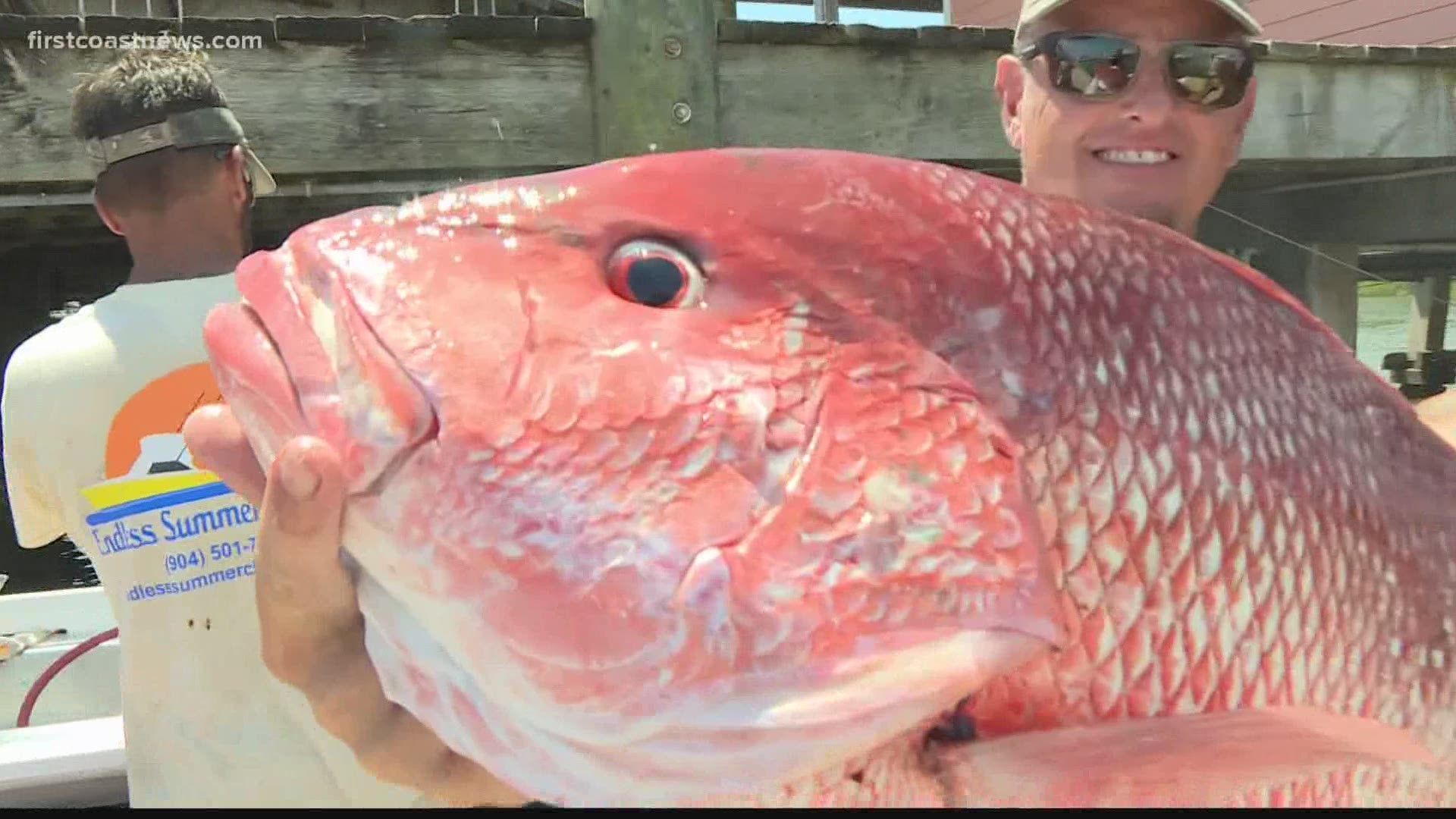FLAGLER COUNTY, Fla. — Recreational fishing is a multi-billion dollar industry in Florida and state is now in the middle of the red snapper season.
Many people went out over the weekend to hook the red beauty. In federal waters, fishing for red snapper is allowed four days this year and participants can only keep one fish per day. That’s because researchers say the species is declining.
But what if it made a comeback?
One local lab is working to put more red snapper in the Atlantic Ocean. In a tank in a small room at the University of Florida Whitney Marine Lab in Flagler County, there are 1,000 tiny red snapper growing.
They're babies, and Dr. Leonardo Ibarra-Castro is helping them grow. His process starts small, with fertilized fish eggs he receives from the University of Miami.
"We harvested 19,000 juveniles in 40 days," he told First Coast News.
Raising red snapper is not easy. The first step you need in order to grow them is the food for the organisms it eats, and that’s micro-algae.
Ibarra-Castro is growing that micro-algae in a different lab that he also created. He is working to find the right nutritional balance.
"The objective with this is knowledge, general knowledge for the species," Ibarra-Castro said, speaking about the red snapper.
Another tricky part in growing these guys is that they eventually eat each other.
"Yeah. They have a characteristic that they are cannibalistic." Ibarra-Castro nodded. "It’s crazy because sometimes you can lose maybe 80 percent of the population you have in the tank just for cannibalism."
So raising red snapper requires constant babysitting.
Once the fish are about 55 days old, Ibarra-Castro explained that he sends them to other researchers who monitor the rest of the fish's growth.
The goal here is to understand what is a healthy ecosystem for the red snapper’s food supply and eventually grow and release thousands of red snapper into the ocean.
Whitney Lab Director Dr. Mark Martindale said marine aquaculture will help in seafood production "in order to become more sustainable here at home and less dependent on foreign sources."
Also, more red snapper in the ocean could boost Florida’s $9 billion saltwater recreational fishing industry.
"Our goal, I think, here is restocking as much as possible that we can," Ibarra-Castro said.
Ibarra-Castro has done this kind of work around the world, in much larger labs and hatcheries.
"I am trying to do the same thing here," he said.
Now he’s here on the First Coast, starting in a small lab, with tiny fish, helping you to reel in more of the big ones.

